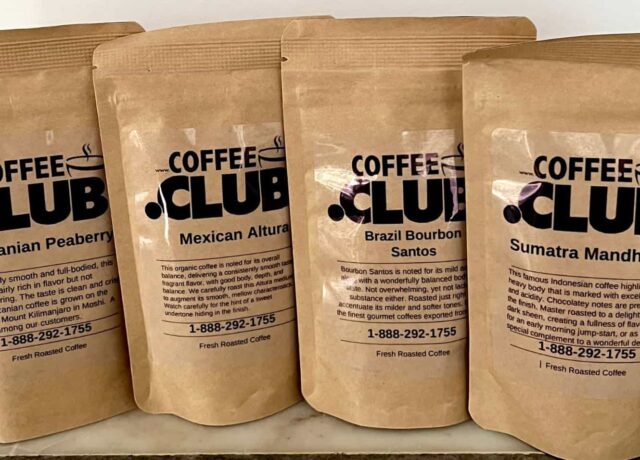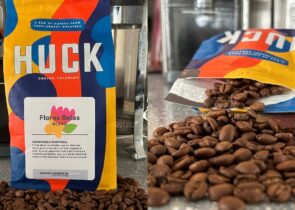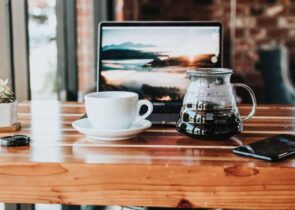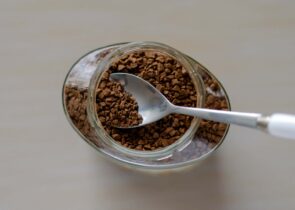In my nine years of working in coffee, I answered this, or similar questions, a lot. So, let’s see if I can help you find your perfect brewing method.
When helping a coffee drinker choose a brewing method, typical questions I ask include, “What type of coffee do you like to drink?”, “How much time are you willing to spend on making that final cup?”, “How often are you planning on using this brewer?” and “What is your budget?”.
Let’s take a closer look at siphon coffee vs. pour-over…
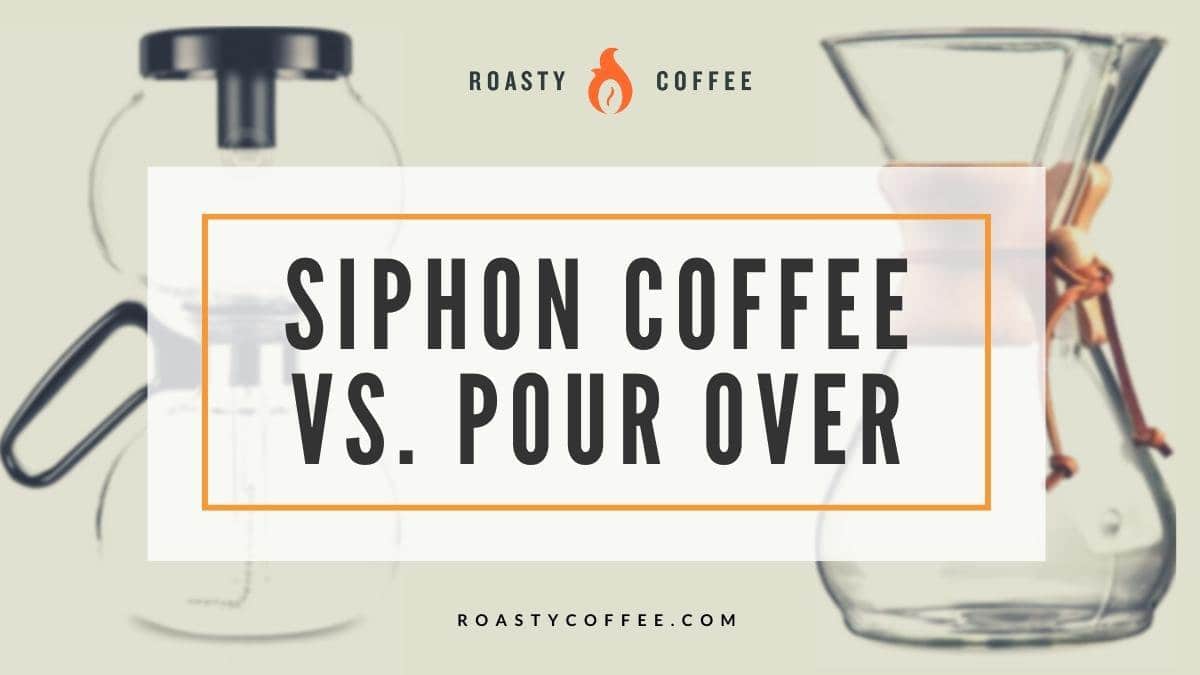
What is Siphon Coffee?
Siphon coffee is one of the oldest ways we still brew coffee today. It’s been around since 1830 and has changed very little from its original design.
That design boasted two glass “balloon” chambers, with a tube and rubber seal that connected the top to the bottom.
The bottom chamber is filled with water and placed over a heat source. As the water is heated, the water vapors within the chamber begin to expand, forcing it up the tube through a cloth filter to the top chamber where the coffee grounds are held.
Because the coffee never comes into direct contact with the heat, it is allowed to brew gently and extract even the faintest tasting notes.
When the brewing is finished, the heat is removed, and the water in the bottom chamber begins to cool. The finished coffee is pulled back through the cloth filter, leaving you with a clean cup of coffee.
If you want more information on this brewer, be sure to check out my other article about the history of Siphon Coffee.
What is Pour Over Coffee?
This can be hard to figure out. If you pour hot water over the coffee that sits in a filter – then it’s pour-over. The sheer number of brewers that fall under this umbrella…ella…ella is wild, from the Chemex to a V60 and everything in between.
That seems like a lot of choices, right? Guess what, they all do the same thing.
You usually have a cylindrical brewer used to hold a filter of some sort. These filters can range from cloth to metal, but the most common is paper.
The brewer is placed over a container, usually a carafe, or coffee cup. From there all you need is a kettle.
Pro-tip, for the greatest control you’ll want to pick up a gooseneck kettle, some water that is just off-boil, and some time.
With the kettle in hand, the pouring technique is everything. You’re in complete control of how much or how little water ends up poured over the ground coffee and how quickly or slowly the water is poured.
It’s the tactile nature of this process that makes pour-overs so unique. Controlling the water makes you feel like a part of the final cup of coffee that has a nice balance of body and clarity of flavor.
For a more in-depth brew guide, check outHow To Brew the Perfect Pour Over Coffee.
Filters, Filters, Filters!
We’ve talked a lot about filters but how do they change the flavor of your coffee? Let’s break it down quickly and help find the one that’s right for you!
Metal filters will keep out the larger bits of coffee ground but let some of the smaller sediments and oils through giving you a more robust flavor.
A cloth filter will take care of the sediment and help cut down on the oils and gives you a nice middle ground between metal and paper filters. However, they do require more maintenance.
We recommend storing cloth filters in the refrigerator, submerged in water in an air-tight container to keep them from getting moldy. You may also need to soak a cloth filter in a 2:1 white vinegar solution or coffee detergent to keep your cup of coffee tasting fresh.
Of the three options, paper filters give you the cleanest cup of coffee because the paper absorbs most of the oils and it also keeps your coffee sediment-free. But it comes at the cost of needing to keep some on hand if you want to make coffee.
Are Siphon Brewers More Affordable than Pour-Over Brewers?
Yes and no. While the upfront cost of the siphon brewer might seem higher, the cost over time for a pour-over makes it much more expensive if you use a paper filter.
You may want to consider picking up a gooseneck kettle for your pour-over brewer to help you better control the speed and height of the water that is being poured. This helps to make sure that you aren’t over-agitating the coffee, or pouring the water too quickly and not giving enough time for the coffee to fully develop.
On the other hand, a siphon coffee maker tends to come with everything you need to get started. Most come with a cloth filter. And, while some do require a butane or alcohol burner to heat the coffee, you can find stove-top brewers so that won’t be an issue.
Like Sands through the Hourglass, So are the Coffees of Our Lives
Do you ever have those days where you roll out of bed and stumble to the kitchen? You’re just looking to pour yourself a cup of ambition, but how long will it take you with these brewers?
Well, both brew times, from start to finish, are pretty close.
Using either of these methods, the entire brewing process clocks in at three to five minutes, give or take a minute or two to let the water heat up. During that time, they both need different things.
When you’re making a batch of siphon coffee, the heat is your best friend and worst enemy. You want to make sure that the water is never allowed to reach a rolling boil.
This will do two things; you’ll burn the coffee and the rolling boil will over-agitate the coffee. And BAM! that cup of coffee is ruined.
Pour-overs are all about control over the kettle. Pouring a steady, even stream of water over the coffee will help ensure that you’re not getting an uneven extraction.
You’ll also want to avoid pouring water directly into the filter as you’re brewing. This can give a papery flavor to your final cup.
Siphon Coffee vs Pour Over: So Which is Better?
That all depends on you! Picking the right method of brewing coffee is a very personal choice. Both of these brewing techniques have a bit of a learning curve, but they’re not impossible to figure out.
If you’re looking for a cup of brewed coffee that is going to show off that expensive single-origin you just bought, then the siphon brewer is the one for you.
This brewing process gives you unmatched clarity in your final cup, allowing every aspect of the coffee to shine through. Plus, it’s a great conversation starter.
If you want a balanced cup of delicious coffee, then it’s pour-over coffee brewing all the way. Not to mention it’s much easier to maintain than the siphon brewer if you’re using a paper or metal filter. The control you get from brewing coffee with a pour-over coffee maker makes the final cup that much more personal.
If you can, why not get both? I have a siphon brewer that I love to break out to impress guests, and a Chemex that makes its way out when I want to feel like a part of the coffee that I’m making.
Either way, you’re going to get a great cup of coffee!
Happy Caffeinating!





